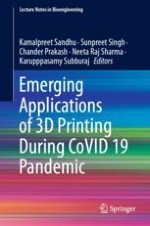This book presents various practical breakthroughs of 3D printing (3DP) technologies in developing different types of tool and gadgets to be used against COVID-19 pandemic. It presents multidisciplinary aspects of 3DP technology in social, medical, administration, and scientific areas. This book presents state-of-the-art applications of 3DP technology in the development of PPE, ventilators, respiratory equipments, and customized drugs. It provides a comprehensive collection of the technical notes, research designs, literature prospective, and clinical applications of 3DP technologies to effectively deal with the COVID-19 pandemic. This book will be beneficial for the medical professionals, pharmacists, manufacturing enterprises, and young scholars in understanding the real potential of 3DP technologies in aiding humans-based activities against the COVID-19 crisis. Having interdisciplinary applications in applied science, this book will also be useful for wide range of academicians, research scholars and industry stakeholders.
